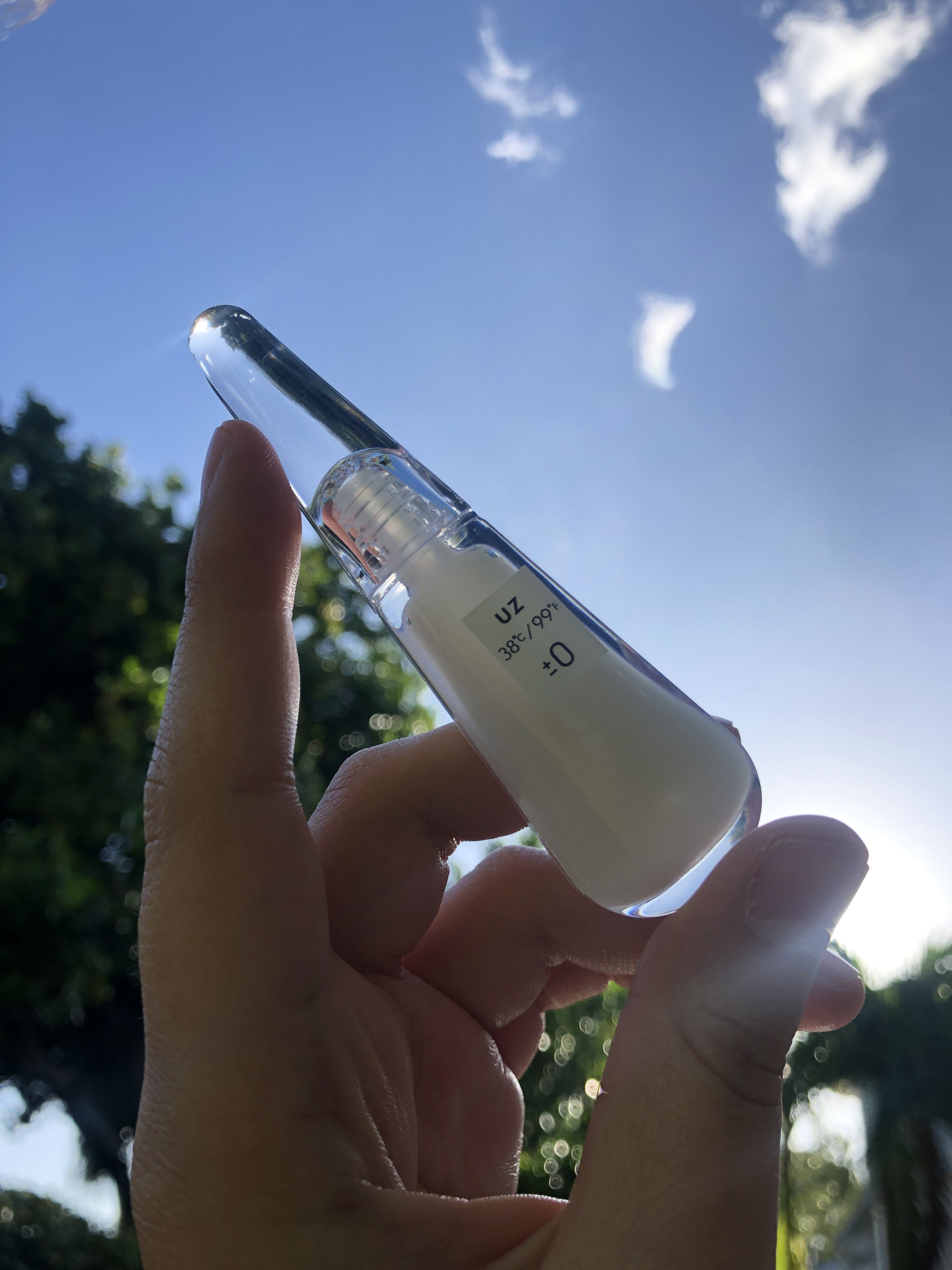Targeted ads are the 2019 version of a poltergeist. They follow me everywhere, until I inevitably go mad. Are you seeing what I’m seeing?! One such example is UZ Unframe the Beauty’s Lip Treatment—its five shades greeted me each time I opened Instagram, for weeks. Eventually I started seeing the familiar teardrop-shaped, slim, lucite-esque bottle plastered on Little Italy scaffolding and large-scale billboards. Heck, a huge ad was recently put up on the west-facing side of the building housing Glossier’s New York flagship. But a conversation with Social Media Editor Eva Alt was my first cue that this magical balm didn’t, in fact, exist only in my head. “Have you tried the new UZ lip hydrator thing?” she asked, continuing, “It’s the first beauty product in a while that caught my attention for real!” Its promise sounded too good to be true: start using this lip balm, and teach your lips to moisturize themselves. You’ll never need another lip balm again. Are you sold? I was, too. I called them in that day.
UZ claims that what keeps lips hydrated over time is a trademarked ingredient called Multi Flora—a lactic acid-derived prebiotic. By keeping your skin’s microbiome healthy, they explain, lips stay hydrated for longer. But if you look for “Multi Flora” on its ingredient list, you won’t be able to find it. Instead, you’ll see the same ingredients found in your favorite lip balms (lanolin, wax and dimethicone), plus one Enterococcus faecalis. According to the brand this is the scientific name for their Multi Flora compound.
E. faecalis is naturally found in your gut and bowel. It’s fine and totally harmless there, but what the heck is it doing in a lip balm?
The E. faecalis UZ uses is heat-treated and sterilized to be safe, stable and fully effective. It actually has well-documented commercial use as a prebiotic for over 50 years, too. It’s often included as a fermenting agent in processing foods such as cheese and sausage, and in Europe, it’s prescribed to treat IBS. UZ's Multi Flora was developed as a health supplement by a Japanese baby product company. In 2017 they collaborated to make a topical version, which is what's in the lip treatment.
Since it's new, there aren't many existing studies about whether probiotic treatments, specifically with E. faecalis, can actually do for you lips. This study notes its potential as a treatment for acne, but your lips don’t get acne—they don’t have sweat glands or hair follicles, so you can’t experience clogged pores on them. (The lip line is a different story.) And if your lips don’t produce their own sebum, I’m left questioning what natural barrier a prebiotic lip treatment would actually strengthen. While UZ credits Enterococcus faecalis with increased glycerin and fatty acid production, I couldn’t find any scientific studies to support it.
After two weeks of use, my lips feel moisturized, sure, but not any more than when I regularly use any other lip balm. It might be too soon to tell—but would you try this weird beauty ingredient? Let's discuss in the comments.
—Ali Oshinsky
This post has been updated.
Photo via ITG

